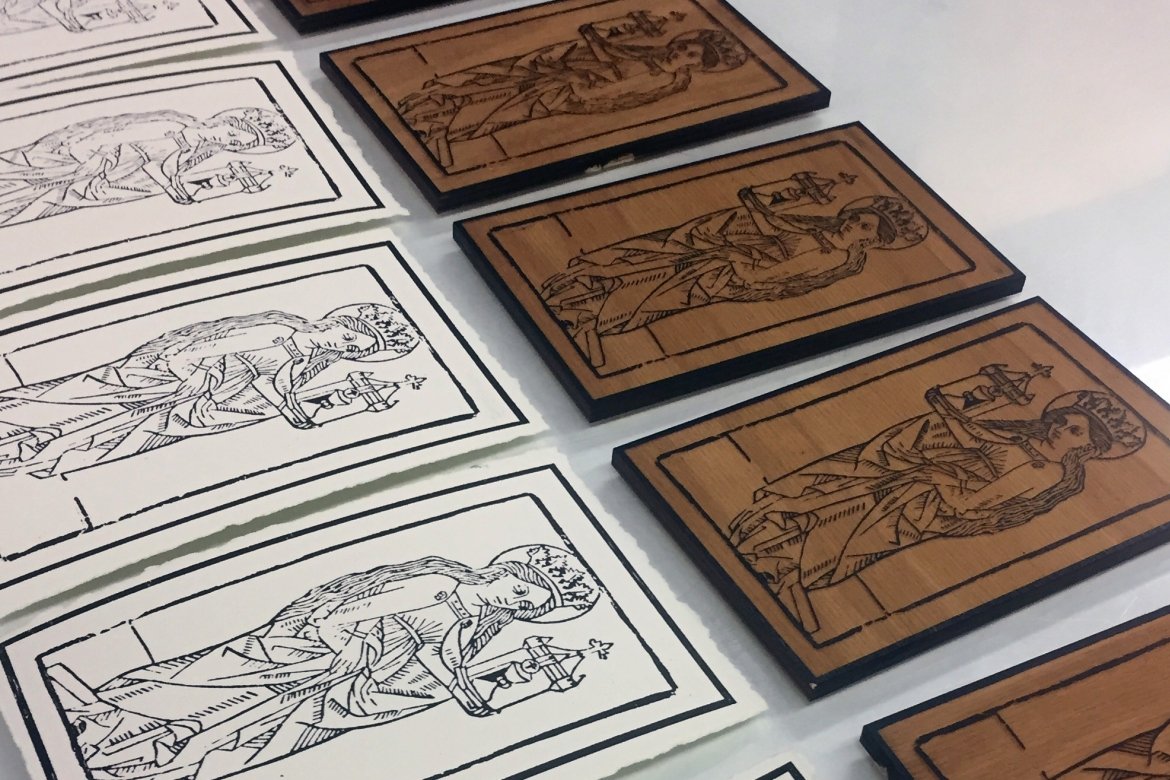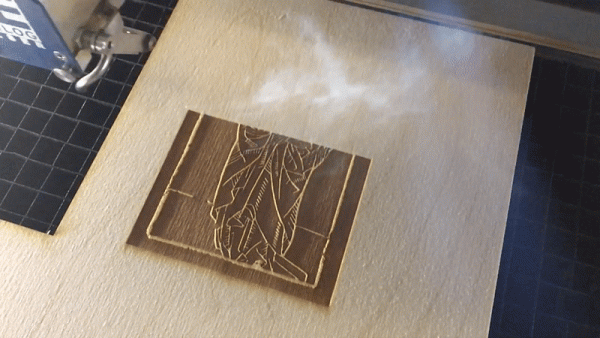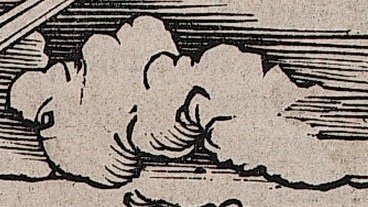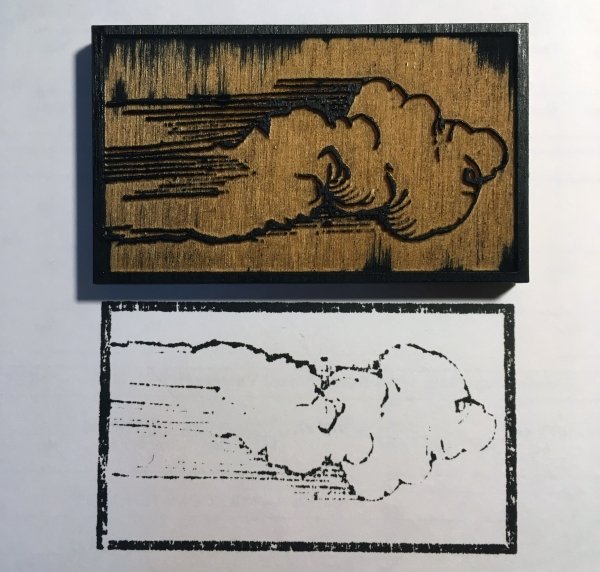Art history gets lasered, inked

Interdisciplinary learning in the arts? Two 15th-century prints, two laser-cut woodblocks, a print press, two hands.
What does it feel like to study art history? Staring at reproductions of works of art on your computer screen, and writing papers? It was during my first semester at Mount Holyoke that my impression of this discipline has been reshaped. A ready stream of interdisciplinary projects prompted me to step out of the classroom and into the museums and studios on campus: to interpret artworks and art in general through different lenses.
One such experience was a woodblock printing project for my Northern Renaissance Art class, taught by Christine Andrews, visiting lecturer in art history. Printmaking, which first flourished during the northern European Renaissance, was such a distinct medium that it expanded the subject and visual language of Western art. In this hands-on project, students perceived the characteristics of the medium by engaging in a similar process, with some digital assistance.
Reproducing Saint Barbara @ Makerspace & printmaking studio

The week before Thanksgiving break is always a stressful time. So when the professor announced that our class was going to spend three class periods studying illuminated manuscripts and early print culture at the Mount Holyoke College Art Museum — and reproduce the museum’s 15th-century print of Saint Barbara — I was more than excited for this break from the norm.
We went together to the Makerspace, where for the first time I saw the famous laser cutter in action. It whirred very impressively, while carving wood with such precision. Apart from adoring the machine, we learned from Nick Baker — a library and IT liaison who helps departments and programs implement new technology — how to convert a digital image into a ready-to-cut monochrome design in Adobe Illustrator. (Nick’s blog has more details.)

We then practiced a professional printing method in the art studio, kindly instructed by guest artist Amanda Maciuba, which involved inking the wood-printing plate with a brayer — a hand-inking roller — and running it through a big press. Seemingly straightforward, the process was much trickier than I expected when I actually tried it. A fine reproduction definitely requires some training. One lesson I learned is that you’ve got to apply enough strength to the brayer and pay attention to details, to make sure that the positive space is fully and evenly inked.
Executing our own designs @ Makerspace

While keeping all of these skills in mind, we next got a chance to create individual woodblock prints — either a reproduction of a detail from a northern Renaissance woodcut or a monogram of one’s initials — and make prints by hand. Inspired by the Art Museum’s excellent print collection, I chose to reproduce a cloud from Albrecht Dürer’s masterpiece, “The Four Horsemen,” as its curvilinear shape and horizontal shading strokes attracted me the most.
As we stamped our woodblocks, some problems emerged. Although my woodblock had all of the details that I wanted, the thin modeling lines appeared vague and unrecognizable on paper. Woodblock turned out to be a much more solid material than I had imagined. It was not at all pliable to work with, not like a simple stamp. Since my hands were unable to create a strong and even pressure, my prints failed to reproduce the rich pictorial effect of Dürer’s original. The newly cut birch plywood, which readily soaked up the ink, was another factor.

A finished work of print, before modern times at least, often exhibits itself as an inherently refined whole, as the complicated creation process is simply veiled by the artist’s mastery of techniques. The woodblock project, which was made possible by Andrews, Maciuba and Baker, inspired me to look at artworks with a new perspective — and take a step closer to understanding the work behind a masterpiece.
Thanks to the laser cutter at the Makerspace, the traditionally difficult and laborious method of carving on wood is made accessible to someone with zero experience, like me. As Mount Holyoke always promotes, interdisciplinarity is at the core of a 21st-century liberal arts education. And here is what I’d like to add: Our faculty indeed put this big idea into practice by employing a broad range of resources on campus in their teaching.